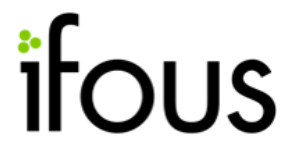English-medium instruction for young learners in Sweden: A longitudinal case study of a primary school class in a bilingual English-Swedish school
Vilka språkideologier kan utrönas i policy och praktik hos en svensk grundskola som erbjuder engelskspråkig undervisning? Det är en av frågorna som Jeanette Toth utforskar i sin avhandling.
Jeanette Toth
Professor Monica Axelsson, Stockholms universitet Docent Christina Hedman, Stockholms universitet
Professor Angel Lin, Simon Fraser University, Canada
Stockholms universitet
2018-08-31
Engelskspråkig undervisning för unga inlärare i Sverige: En longitudinell fallstudie av en mellanstadieklass i en tvåspråkig engelsk-svensk grundskola
English-medium instruction for young learners in Sweden: A longitudinal case study of a primary school class in a bilingual English-Swedish school
Institutionen för språkdidaktik
English-medium instruction for young learners in Sweden: A longitudinal case study of a primary school class in a bilingual English-Swedish school
This thesis aims to highlight the policies, perspectives, and practices of language use in a bilingual English-Swedish primary class during Grades 4–6, where English was the medium of instruction in several subjects. A rapidly increasing number of Swedish compulsory schools offer these programs, which are often associated with high status and academic achievement (Skolverket, 2010). Although several studies have investigated content and language integrated learning (CLIL) and English-medium instruction (EMI) at upper secondary schools in Sweden, there is little research on such programs for young learners in the Swedish context. As students may start learning English in Swedish schools as late as Grade 3, young learners who begin attending English-medium programs in Grade 4 may have limited knowledge of English, which can have implications for their content learning.
In this thesis, which is situated within an ecology of language framework (van Lier, 2004), questions about language ideologies, teacher and learner beliefs regarding teaching and learning in an additional language, and translanguaging practices have been explored in the three studies included here. Data has been collected over three school years within the larger longitudinal case study, including policy texts, informational brochures, schedules, statistics, instructional materials, student texts, audiorecorded interviews with 13 members of staff and 22 students, audiorecorded lesson observations, fieldnotes, and photos of the school and classroom landscape as well as of instructional materials and student texts.
Study I, which focused on stated and practiced language policies concerning languages of instruction in an EMI program in a Swedish compulsory school, revealed a linguistic hierarchy privileging English and a native speaker ideal. While Swedish was also valued as the other language of instruction, minoritized languages such as multilingual students’ mother tongues were marginalized. Likewise, in Study II, which explored stakeholder beliefs about the EMI program, it was found that while English was highly valued among the participants and Swedish was considered to be a source of support for students in the English-medium classroom, other languages were mostly invisibilized in the mainstream classroom. However, despite a prevailing belief that students learned English naturally through language immersion by being ”forced” to use it to communicate with the native English-speaking teachers, there were also concerns about implications for students’ development of subject-specific Swedish. Finally, in Study III, analysis of language choices in English-medium Science and Mathematics lessons revealed how the use of English and Swedish could function as resources for teaching and learning.
Although the findings from this case study may not necessarily apply to other English-medium programs, they nonetheless have implications for policymakers at the national and local levels, as well as for teachers and students involved in such programs. Ideological assumptions about languages and language learning have been shown to shape both policy and practice within educational contexts such as the school in this study. It is therefore imperative that stakeholders are made aware of the challenges involved with teaching and learning in an additional language, so that these programs can be organized in a way that promotes content learning as well as learners’ multilingual development.
Relaterade länkar

Undervisa i engelska med digitala verktyg
Kurs för dig som undervisar i engelska med digitala verktyg.
 Åk 7–Vux
Åk 7–Vux Köp den för 749 kr.
Kursintyg ingår.

